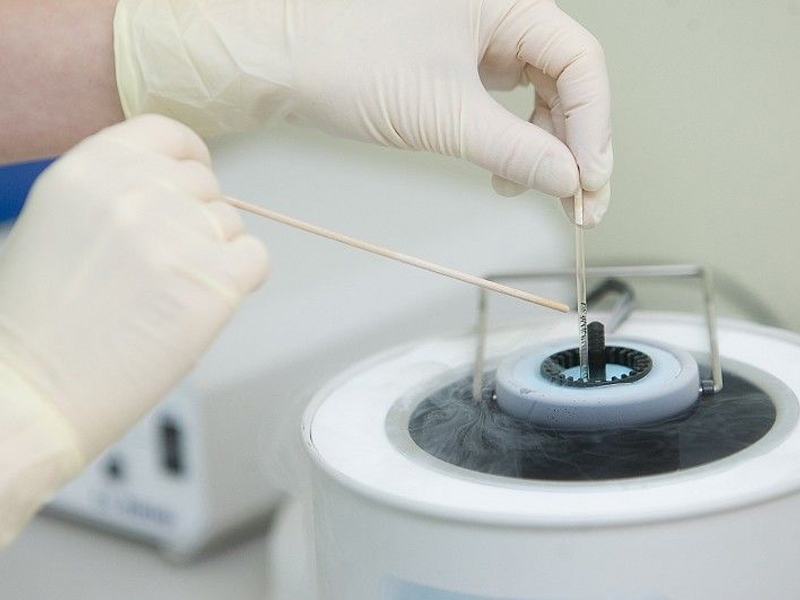ICSI, PICSI and IMSI methods, what is the difference and differences?

The process of conceiving a child has been known to everyone for a long time. But not everyone can understand this at the cellular level. The male reproductive cell is a sperm cell up to 50 micrometers in size, and after ejaculating into a woman’s vagina, he has to travel a path tens of thousands of times its size. A path that takes up a lot of energy, and then it still needs to get inside the egg and merge with it. Only healthy sperm are capable of this. But today, the absence or small number of such cells is quite common.
This is called male infertility. This is a condition where male sperm has a poor quality:
- Lack of live and active sperm in the ejaculate
- A large number of pathological cells
- Gene mutations
- Inactive sperm
The presence at least of one of these indicators can lead to male infertility. And oddly to say, it occurs no less often than the female, approximately 40%.
Sometimes, in order to improve the quality of sperm, it is enough to change the lifestyle, give up bad habits, and undergo hormone therapy. But, this does not always happen, and no matter how hard a man tries, his sperm are still not able to fertilize an egg. In this case, doctors recommend assisted reproductive technologies.
One of these is in vitro fertilization (IVF) or an “in vitro” procedure. IVF is an artificial insemination program that is carried out outside the woman’s body, in a laboratory environment. In a simplified way, a reproductive doctor retreives an egg from a woman, takes a man’s sperm. Then they are placed in a joint vessel, where fertilization takes place. Then, over 3-5 days, the fertilized egg develops and grows. And the already formed, live and healthy embryo is implanted into the uterus of the expectant mother. This is how this method looked at the beginning. But over time, doctors allowed the possibilities of this method.
Today we have access to in vitro fertilization supplements, which are aimed at eliminating problems from the male side. Indeed, sometimes, the quality of the sperm does not allow the sperm to penetrate the egg, even being just in one test tube. Thus, there was created a method of manually selecting the best sperm and then directly fertilizing the egg.
ICSI method
ICSI (IntraCytoplasmic Sperm Injection) – literally translated as “sperm injection into the egg”. This is the first complementary in vitro fertilization technique that has appeared. Its point is that first the reproductive physician selects a spermatozoon, with the help of an electron microscope, with a magnification of 400-600 times. Thus, he can see all pathologies, mutations, cell activity and chooses the healthiest one. After all, only a full-fledged sperm cell can give a healthy and full-fledged child.
He fixes it and places it in a special, very small needle. Further, with the help of this needle, he pierces the outer shell of the egg and injects the sperm directly into its cytoplasm. Thus, the doctor fertilizes the egg. This happens with all eggs received from a woman.
Then everything happens as in usual IVF: embryo incubation, uterine implantation and a successful pregnancy.
Adding ICSI to IVF significantly increases the chances of successful fertilization and the birth of a healthy child.
Indications:
- Any causes of male infertility
- Women over 40 years old, since the wall of the egg is thicker
- More than 50% of unsuccessful fertilizations with IVF
- Immunological factors
But the doctors did not stop there, they continued their research and decided that the procedure could be further improved. This was facilitated by technical progress, namely more powerful microscopes. And then a new method appeared – IMSI and PICSI.
PICSI technique
PICSI (Physiologic Intra Cytoplasmic Sperm Injection) – if literally, it is translated as “physiological intracytoplasmic sperm injection”. This method is also an addition to the ICSI procedure. But in addition to visual selection, under a magnification of 400 times, the determination of the physiological activity of the sperm cell is also added using special media. They are added to the “test tube” to the sperm, and simulate conditions as close as possible to the penetration of the sperm through all the membranes of the egg.
Thus, the doctor checks the maturity of the sperm, activity, physiological “strength” and the ability to interact with the egg. In his decision, the doctor is guided not only by visual data, but also by the chemical and biological characteristics of the sperm.
Further, the procedure is carried out as in conventional IVF + ICSI. As practice shows, PICSI increases the chances of a successful pregnancy by 25-35%.
IMSI technique
IMSI (Intracytoplasmic Morphologically Selected Sperm Injection) – which means “Intracytoplasmic, morphologically selected sperm injection”. This technique is an addition to the ICSI procedure. But there is one main difference – this is a microscope. During the IMSI, a magnification of 6000 times is used.
This method became available only when modern, powerful microscopes appeared. This increase allows you to see not only the mobility and vitality of spermatozoa, but also to carry out their morphological selection.
What does it mean? Almost every man has pathologically developed spermatozoa: two heads, bifurcation of the tail, the absence of a nucleus inside the cell, or other mutations, small mutations in the morphological structure of the sperm. Normally, there are only a few such spermatozoa. But, for various reasons, they can become much more and then pregnancy does not occur or does occur, but the child is born with pathologies.
In turn, the IMSI method allows you to select the best sperm and fertilize. Further, the procedure is carried out according to the standard IVF + ICSI protocol.
As practice shows, the additional IMSI procedure raises the success rate of IVF up to 70% even in the most severe cases of male infertility.
The indications for the procedure are the same as for ICSI, but it is additionally recommended to do it if a man or his family has had cases of genetic mutation, pathology and congenital diseases.
Also, the method allows you to almost completely remove the possibility of having a child with pathologies.
So, the IMSI method allows you to select the best sperm and fertilize. Further, the procedure is carried out according to the standard IVF + ICSI protocol.
As practice shows, the additional IMSI procedure raises the success rate of IVF up to 70% even in the most severe cases of male infertility.
The indications for the procedure are the same as for ICSI, but it is additionally recommended to do it if a man or his family has had cases of genetic mutation, pathology and congenital diseases.
Also, the method allows you to almost completely remove the possibility of having a child with pathologies.
Considering modern assisted reproductive technologies in medicine, today even a man with critical problems in sexual health can carry out fertilization.
Therefore, you cannot give up and always go to the end. Maybe just one of the additional techniques ICSI, PICSI or IMSI will help you have your own child, who will delight your family.
Contact us for help today and we will do our best and even more!


